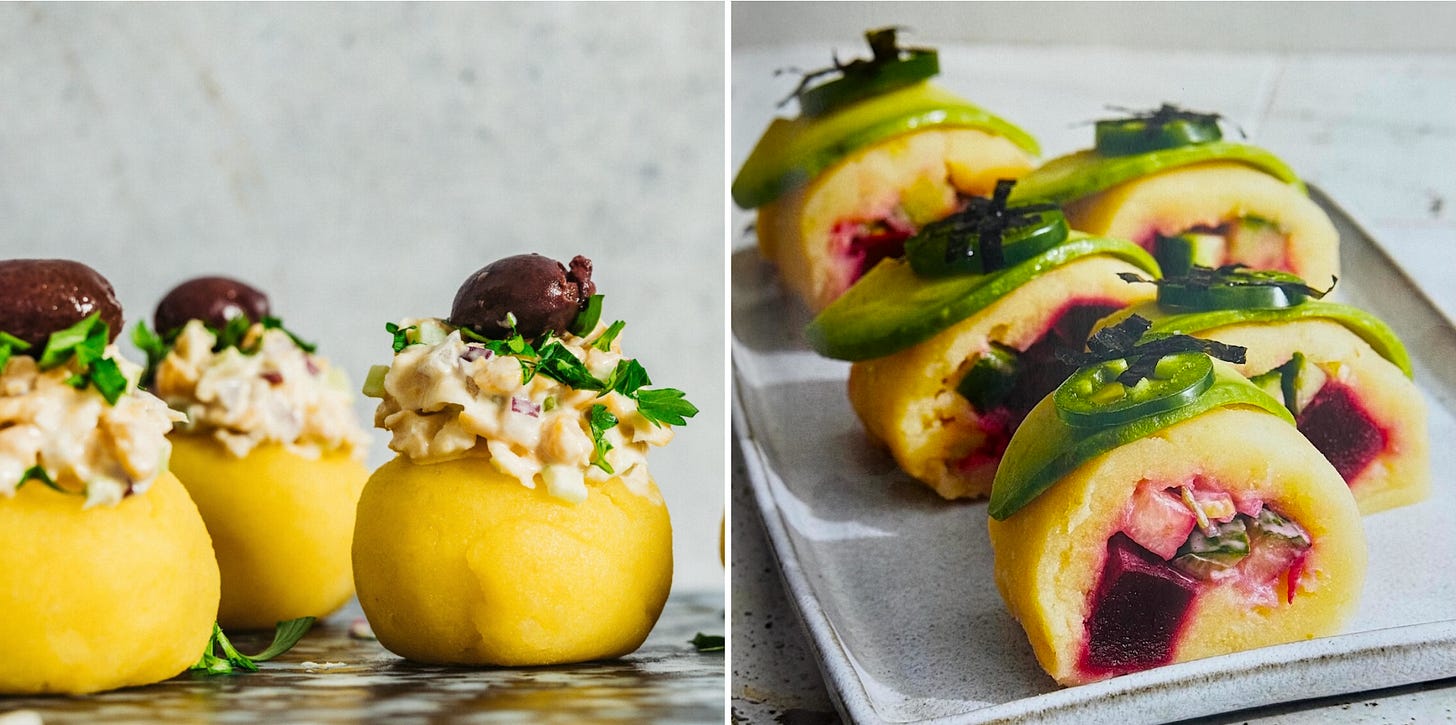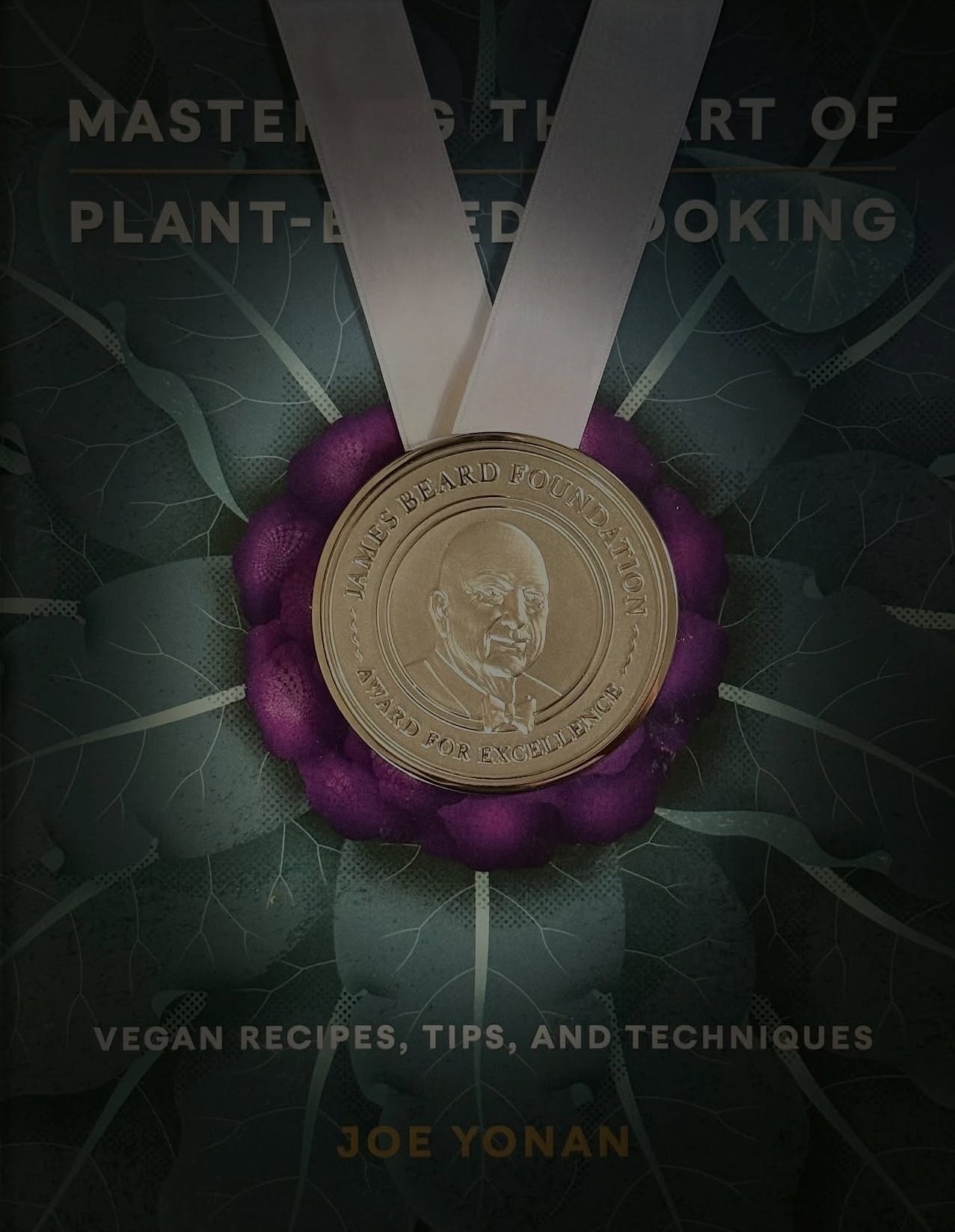The Art of Developing Recipes
Or how I contributed recipes to an award-winning cookbook.
Recipes are a gift. Mom gifted me her recipes when she taught me to cook. And for more than a decade I gifted recipes through my cooking classes, blog, newsletter, and published stories. But only recently did I gift recipes for a cookbook.
The Invitation
Four years ago, Joe Yonan asked me to develop recipes for his new cookbook. I knew who he was, admired his work, and had his cookbooks in my home library, so I wondered how he found me. His answer surprised me: he had been following my writing for some time now, and found my recipes to be unique and interesting.
I think my stories about Peru’s food culture for TASTE magazine, some with recipes, must have made a good impression.
During our first phone conversation, he described the ambitious scope of the project and how he was recruiting a dozen or so recipe developers to help out with 300 recipes. At the time, I was busy with my own projects and sleep deprived from being a new dad, but by the end of our chat, he convinced me and I was all in.
The Recipes
My goal was to develop all new recipes for the cookbook, significantly different from other recipes I’ve published. Also, it was important to use non-processed and accessible ingredients. That meant no imported Peruvian aji amarillo (yellow hot pepper), or maiz morado (purple corn).
These recipes—rooted in traditional dishes and which represent the multicultural diversity of Peruvian cuisine—made the cut:
Beet Ceviche—an homage to the bonito ceviche my grandfather cooked
Trumpet Mushroom Tiradito—celebrates the Japanese-Peruvian sashimi dish
Beet & Quinoa Soup—a hearty plant-based twist on a coastal dish
Ocopa Potato Garden—invites you to the Andes mountains of Peru
Causa Rolls with Beet & Potato—a sushi roll take on the traditional potato mash
Panetón Loaf Cake—evokes the Christmas holidays in Lima
Quinoa Oat Milk Pudding—the Andean version of the classic arroz con leche
Tusán Pisco Sour—toasts the popular Chinese-Peruvian food culture
The Process

Developing recipes is an art, where the ingredients, techniques, and presentation tell a story. Take the Causa Rolls with Beet & Potato. The template for the recipe is the traditional creole dish Causa Limeña, but I wanted to transform it into a dish that showcased the creativity of Japanese-Peruvian Nikkei cooking.
Mom prepared Causa Limeña in a casserole and spread a bottom layer of the yellow potato mash mixed with olive oil, aji amarillo, salt, and lime juice; added a middle layer of tuna salad with onion, celery, and mayo; then spread a top layer of the potato mash; and garnished the dish with olives, parsley, and hard-boiled eggs.
In my Vegan Causa Limeña, I replace the tuna with mashed chickpeas and use plant-based mayo, but the potato mash—already vegan—is the same. For the presentation, however, I shape the potato mash into individual servings, balls that I top with chickpea salad to make it a Peruvian piqueo, small bites of comida criolla.
So the question I posed was—how do I transform my Causa Limeña into a Nikkei dish?
First, the presentation. The potato mash is very smooth yet firm when chilled so I shaped it into a roll that reminds one of a sushi roll, specially when sliced and topped with avocado, nori strips, and jalapeño rounds. Since potatoes are from Peru, using the potato mash instead of rice made the Japanese roll more Peruvian.
Next, the yellow potato mash. Instead of olive oil, I used toasted sesame oil to introduce the flavors of Japanese cuisine into the dish. But for the heat, the recipe calls for the more accessible sriracha rather than aji amarillo. I kept the limes, as the sharp flavor is ubiquitous in Peru’s ceviche and Pisco Sour, so I wanted it here too.
Now, the filling. Instead of a chickpea salad, I experimented with steaming cubed beets in kombu stock in order to impart umami from the sea and introduce a color and texture that is reminiscent of bonito. Then, scallions replace the red onions and cucumber stands in for the celery that I mixed with the beets and mayo.
And that was my process to transform the traditional creole dish that is Causa Limeña into a Nikkei dish that combines Japanese and Peruvian ingredients and techniques. So the flavors and presentation are familiar, yet unique. And they tell a story. That is what makes Causa Rolls with Beet & Potato an interesting recipe.
The Cookbook
Joe Yonan’s cookbook, “Mastering the Art of Plant-Based Cooking,” went on to win the James Beard Award for best Vegetable-Focused Cookbook. In his Instagram post, @joeyonan said this about the developers that contributed recipes:
Thank you for helping me spread the word that plant-based cooking doesn’t have to be an identity — it is a cuisine unto itself, worthy of study and interest and … mastery (or the ongoing attempt at such).
The cookbook is truly a beautiful collection of recipes, all with their own stories and cultural significance. And each recipe is a small, intimate gift that promises to feed and nourish you in ways you might never have experienced before.



kudos for the well-deserved inclusion/feature in this impressive book - thanks for sharing and creating these recipes!